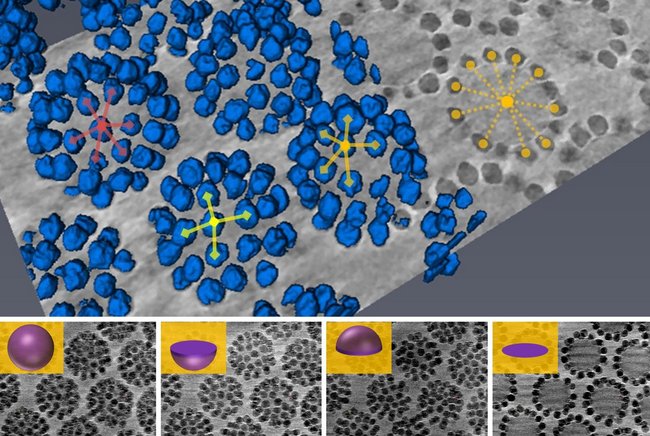Hierarchical materials: complex building, simple blocks
Public summary of PhD-thesis of Egemen Deniz Eren

Bone, bamboo or honeycombs. In nature we can find numerous examples of highly ordered materials with intrinsic structures tuned to their specific functions. The structural complexity of these so-called hierarchical materials can provide physical properties that otherwise cannot be obtained. By using nano-sized lego bricks TU/e researcher Egemen Deniz Eren investigated the assembly of synthetic hierarchical materials and unraveled the different levels of the multiscale hierarchy of natural materials.
Hierarchy, defined as ‘an arrangement or classification of things according to relative importance or inclusiveness’, plays an important role in the world around us, whether it is tangible or not. Nature provides us tremendous information about design rules of hierarchical materials, therefore, throughout the scientific journey of humankind, scientists are constantly inspired by nature to discover and use them.
Hierarchical materials, whether natural or synthetic, are organized matter in a multiscale manner. They therefore display distinct architectural structures at alternating length scales with each level of the structure being a self-forming individual building block. The structural complexity of hierarchical materials can provide physical properties that otherwise cannot be obtained. In nature, we find interesting examples of highly ordered materials with intrinsic structures tuned to their specific functions, such as bone, bamboo and even honeycombs. For example, bone is a composite biomaterial composed of inorganic hydroxyapatite minerals and organic collagen proteins organized into a sophisticated architecture with a multiscale structural hierarchy having strength and toughness and being responsible for providing protection and mechanical stability.
The formation of natural as well as of many synthetic hierarchical materials, occurs in an aqueous environment. Self-organization at ambient conditions through a bottom-up strategy is the hallmark of biological materials, a strategy that provides invaluable insights into the design rules of synthetic hierarchical materials. Bottom-up self-assembly is the equivalent of building a complex model structure, such as a Lego set, by using tiny bricks. By exploiting the bottom-up synthesis route that nature uses, we can create complex hierarchical end materials by employing rather simple building blocks.

Because both natural and synthetic materials have multiple levels of three-dimensional structural hierarchy, two-dimensional imaging techniques do not provide adequate structural information. To determine the fine details of each hierarchical organizational level of either of these materials, Eren used advanced electron microscopy techniques such as electron tomography and focused ion beam/serial slice and view. According to Eren the role of these advanced electron microscopy techniques is partly similar to the roles of satellites that Space Agencies send into an orbit around Earth. “As you can simply enjoy the view of the Colosseum with the comfort of your living room thanks to Google Earth, we can enjoy the invaluable insights that we gained thanks to electron microscopy.”
Eren used a bottom-up self-assembly route to create a hierarchically ordered silica-based material by exploiting the assembly routes of nano-sized lego bricks. Moreover, to understand how our bones change in pathological conditions, by employing advanced electron microscopy techniques, he found a close relationship between the mutations that occur at the gene level and the structural changes that occur at the material level. His research is an important step towards understanding the fine details and design rules of natural and synthetic hierarchical materials. The insights that Eren and his collegues gained will help to build advanced synthetic materials with better chemical and physical properties and to better understand the structure-function relationship in different conditions.
Title of PhD-thesis: Exploring the multiscale hierarchy of natural and synthetic materials. Supervisor: prof.dr. Gijsbertus de With, TU/e.